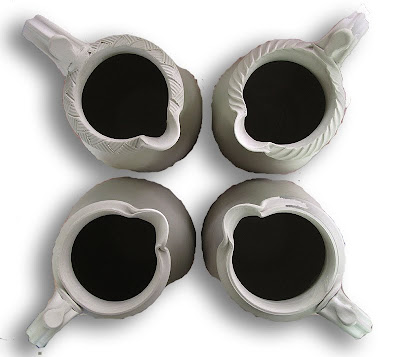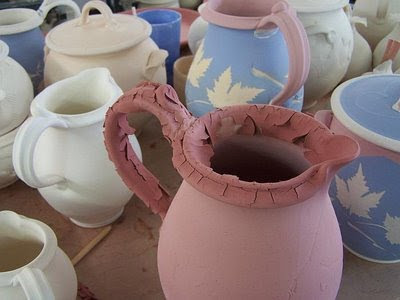
I remember when I got my first cassette player with "Dolby® Noise Reduction". It was pretty cool. Gone was the hiss of the tape. Gone were the crackles and pops from the LPs I'd recorded into homemade cassettes.
But the polish came off that apple pretty quickly. Gone along with those vanished hisses, pops and crackles were the sounds of fingers on guitar strings, and breathing woodwind players, and sounds of picks on fretboard ends.
Dolby sucked the life right out of my favorite recordings. Perfect was, in this case, not perfect. Those extraneous noises were very much a part of the vitality of the recordings. The noise reduction that Dolby offered me came at a too high price -- lifeless listening.
Perfection, as a craftsman's goal is admirable. There's a strange balancing act. Always a balancing act -- achieving an end result that, in its perfection both appears to transcend the means of its production -- while at the same time leaving the hint of the humanity behind in the creation.
Craft has historically thrived when technology is perceived as a threat to our human expression. Man vs. Machine. The Steam Drill vs. John Henry romanticism. In this digital age when even much of our "art" is computer generated, there are still those of us who aren't ready to give up the hands-on exploration of human trial and accomplishment.
So, should thrown pottery be perfect?
Yes. In the sense of a craftsman's results coming close to meeting his intentions, yes. Perfection is a worthy goal. Control the medium. No excuses.
But just maybe that craft should also be a celebration of the idiosyncratic material -- clay -- a cussed substance that doesn't always stay where you put it, warps, shrinks, and cracks when handled poorly.
And just maybe the marks of the potter's hands as a reminder that process matters -- matters to lots of us humans -- should not be erased from surfaces, rather, be enjoyed as the part of a better whole.
It's not about celebrating imperfection or rationalizing lazy practice. It's not trying to accept a "it's good enough for..." mentality. The striving should always be there. The striving should always be evident.
I want my recordings to hiss and pop if it means I also still hear the squeak of fingers on strings letting me know that there was a living, breathing human behind the recording -- a human who was participating in the activity of filling the world with exciting, beautiful, thoughtful work.
And I want my pottery to have finger marks, double stamps, bent walls, irregular trailed lines -- not for their own sake -- not as added affectation to elicit calculated response -- but as evidence of process. I want those things that remind me that there was a striving human with lofty goals willing to risk time, talent, and not a small amount of hope that he/she'd be putting something of value into our shared world.

































